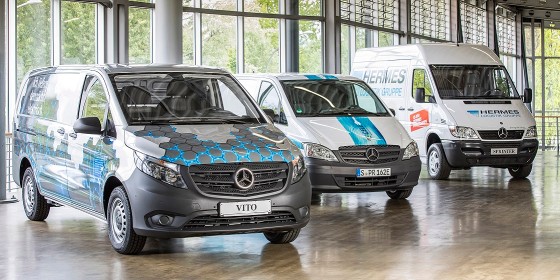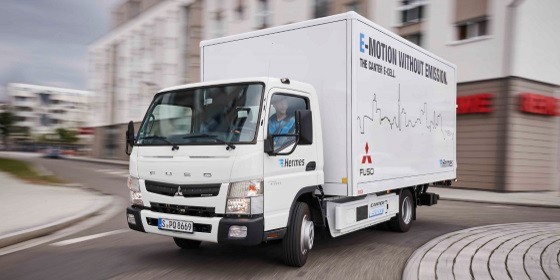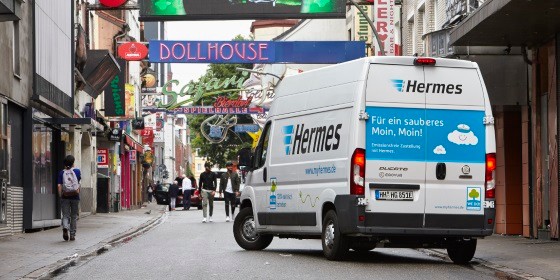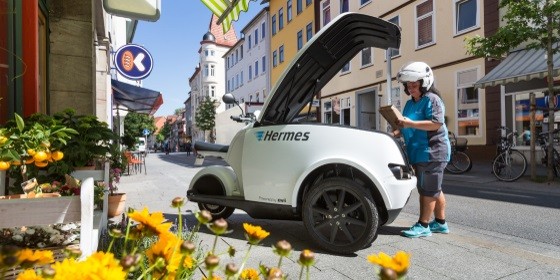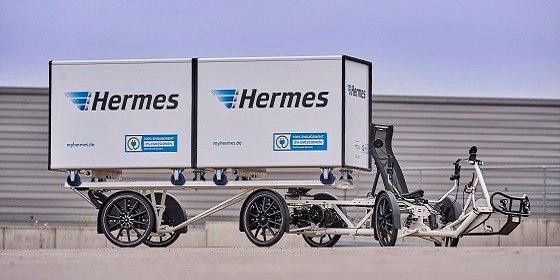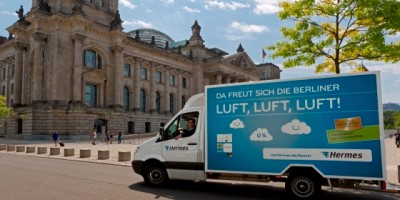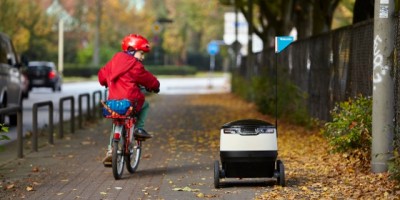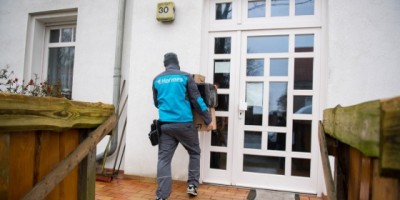Low-emission transport technology
Investment in low-emission drives
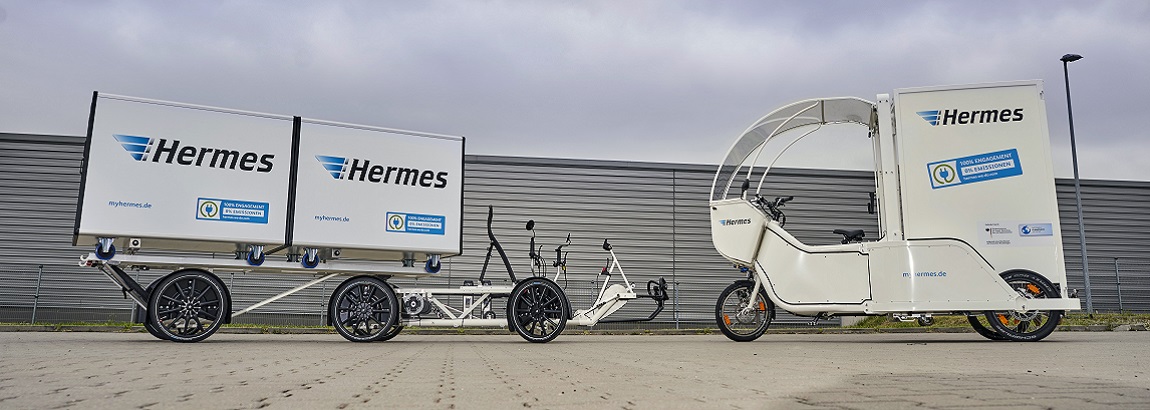
Across the industry, virtually all companies use conventional diesel-driven 3.5 tonne utility vehicles. Increasingly however, they are also testing alternative drive technologies, These include motorised delivery vehicles using electric or natural gas engines. On the other hand, parcels are also being delivered using pure muscle power by cargo bike. As a corporate group of companies, Hermes is looking to invest climate-friendly, low-emission/zero-emission technologies and alternative drives. Since 2017, we have been pooling such efforts for Hermes Germany in our Urban Blue programme.
Targeted conversion to low-emission vehicles
A key approach to reducing emissions lies in optimising and modernising our fleet both in the final mile and on upstream line hauls.
- On the final mile: Gradual conversion to emission-free, above all battery-powered deliveries in urban areas.
- Line haul: In view of the stricter Euro 6 standard emission threshold, introduced in 2014 for all newly registered lorries through Europe, we are now in a process of successively converting our vehicles. For example, 97% of trucks deployed by contractual partners currently comply with the Euro 6 standard - Hermes' own trucks already fully comply.
Pilot project using alternative drive systems
Hermes has already been actively committed to using alternative drive systems since the early 1990s. As part of its pilot projects on electromobility, Hermes is currently deploying the following vehicles:
- E-trucks (prototypes – electrically-operated trucks)
- E-vans (prototypes – electrically-operated delivery vans)
- E-bikes (electrically-operated cargo bikes)
- Delivery robots
Overall, the framework conditions for the use of electric vehicles remain difficult – even in pilot operation. For example, there are hardly any passable production vehicles and there is also no adequate infrastructure at charging stations.
Selection of current projects on electromobility in the reporting period
Hermes is currently testing the deployment of different electronic-powered vehicles with various partners both in the final mile and on line haul routes.

